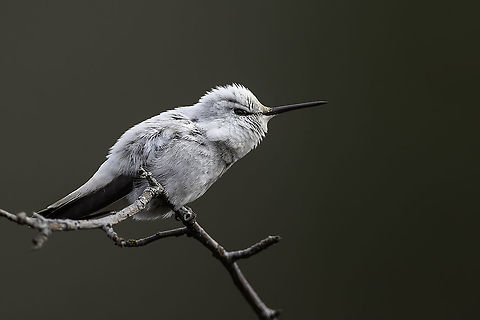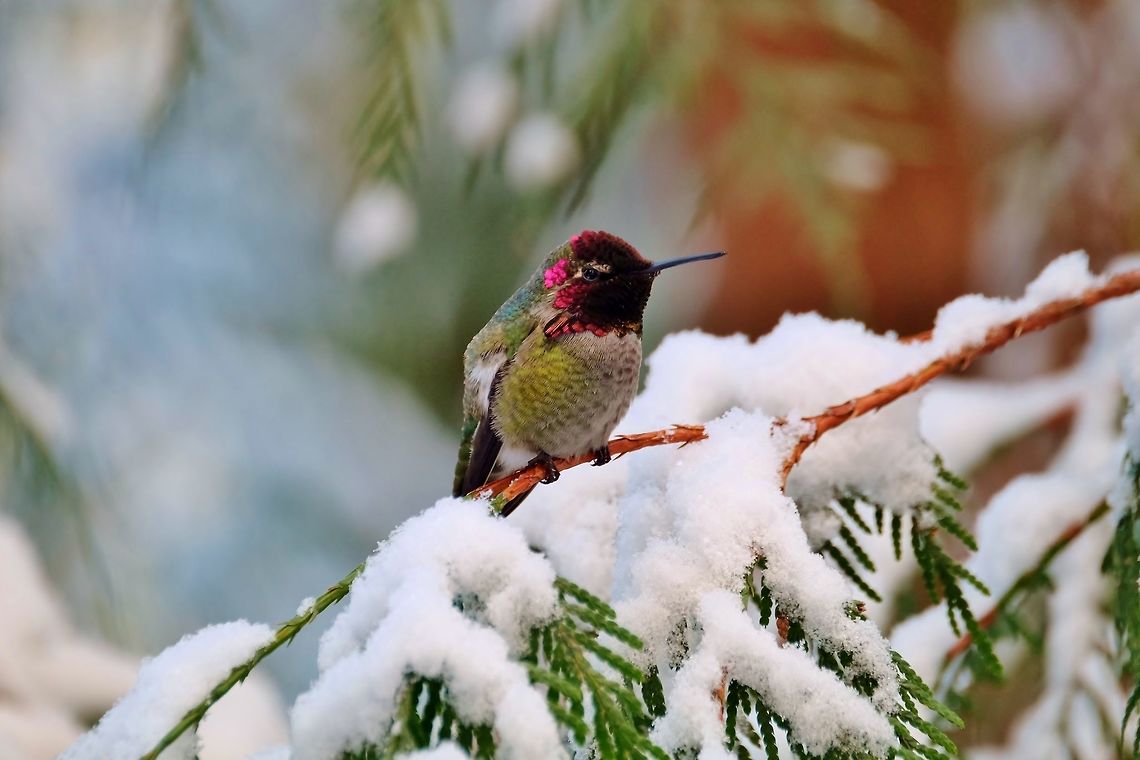
Anna's hummingbird is a North American species of hummingbird. It was named after Anna Masséna, Duchess of Rivoli. It is native to western coastal regions of North America. In the early 20th century, Anna's hummingbirds bred only in northern Baja California and Southern California.
Similar species: Swifts And Hummingbirds
By mossy rock studio
All rights reserved
Uploaded Feb 16, 2019. Captured Feb 5, 2019 11:10 in 21595 S Hinkle Ln, Estacada, OR 97023, USA.


comments (8)
Not all hummingbirds migrate in the winter! Anna's Hummingbird (Calypte anna) is native to the west coast of North America, living as far north as British Columbia! They are year-round residents, and have the northernmost range of any hummingbird!
Why would these hummingbirds not choose to migrate to warmer locations when the weather turns cold? Their decision to stay partly has to do with the fact that people feed them sugar water via hummingbird feeders. This is a super rich food source that requires very little effort to consume. In addition, the growth of urban areas has led to the development of diverse flower gardens with plants that bloom longer than native species. This is all very enticing to Anna's hummingbird.
How do these tiny birds survive the winter? On a typical winter day, they simply eat and rest, making sure that as much food as possible is converted into fat. They feed so much that they can gain 16% of their body weight each day, and then burn it all off during the night. In addition to drinking nectar and tree sap, Anna's hummingbirds eat insects and spiders—even going as far as stealing insects from spider webs. At night, they enter a state of torpor, which is a kind of deep sleep where the birds lower their metabolic rate to conserve energy. While in torpor, their body temperature plummets from about 40°C to 9°C (from 104°F to 48°F). Plus, they reduce respiration from 245 breaths per minute to only 6; if necessary, they can suspend respiration for up to five minutes!
During the winter, these hummingbirds are always mere hours away from starvation. They live on the edge by daring to survive the cold northern winters. These charming, perky, airborne gems are not as fragile as they appear; in fact, they are as tough as diamonds. {Spotted in Oregon, USA by JungleDragon user, Mossy Rock Studio} #JungleDragon Posted 6 years ago
I can't tell for sure just how many there are, but think I've seen at least 2 different females an at least one male. Anna's are *very* territorial... when it is very cold the most dominant one will sit where it can see the feeder to rest and guard it. Any other bird that dares approach is quickly chased away. They are extremely curious... I've caught them once or twice hovering and staring at *me* through the window! Posted 6 years ago